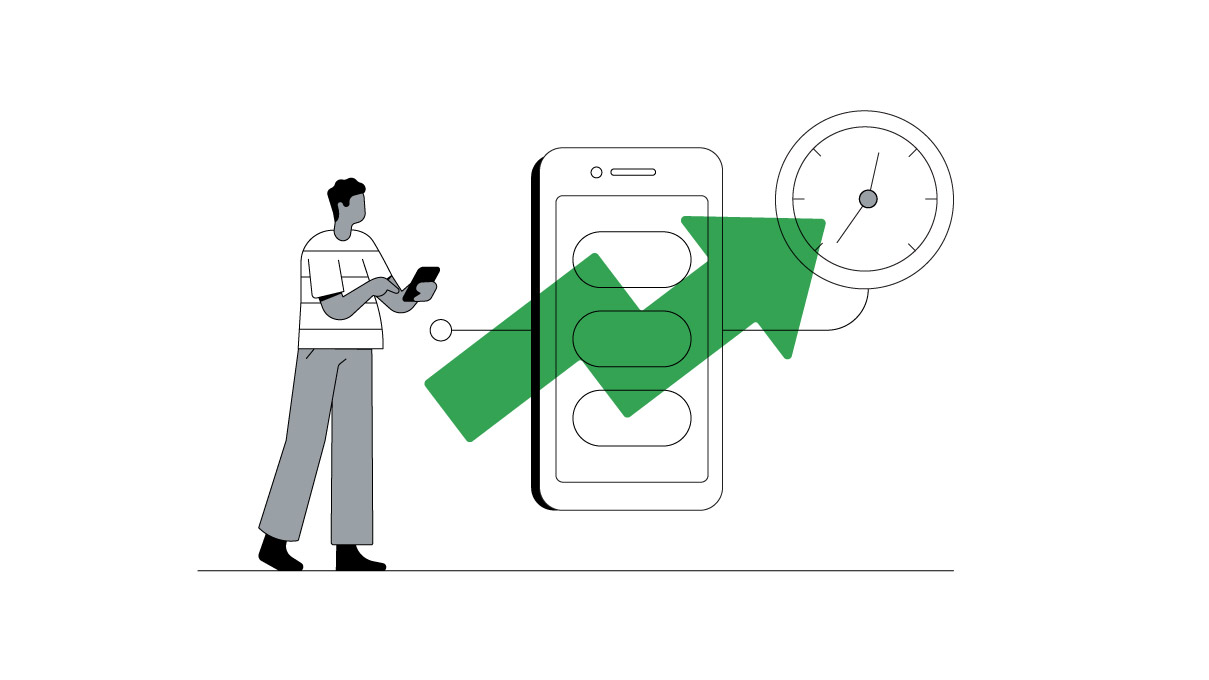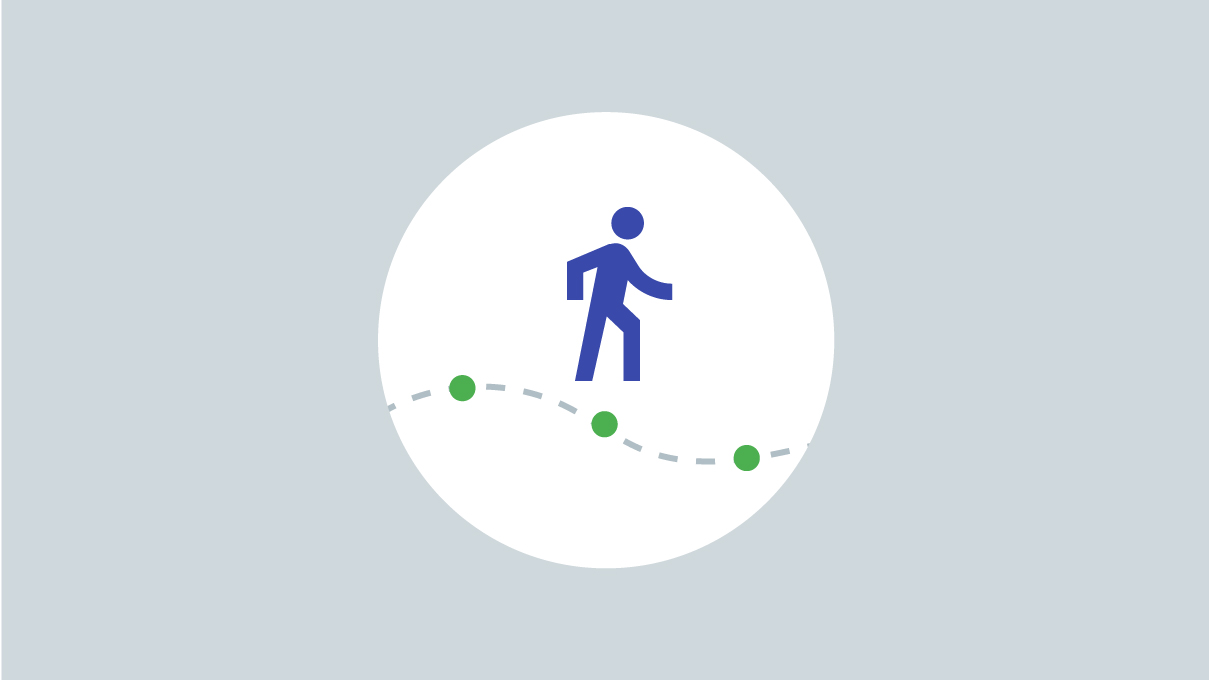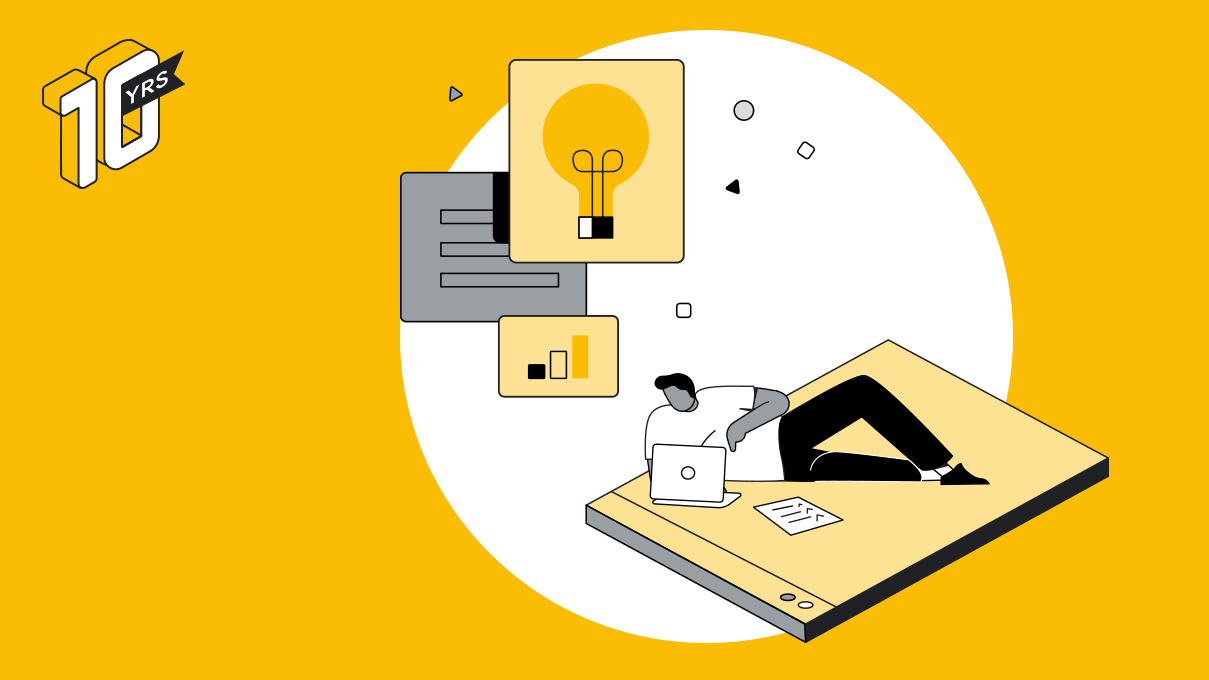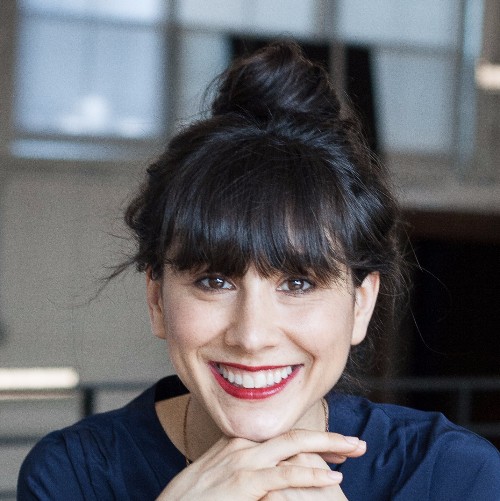Thanks to the openness of the web, consumers are taking control of the brands they love. But, although the rules of the game have changed, smart brands are embracing digital to create their most responsive, innovative, and efficient campaigns ever. This is how they're doing it.
John Battelle has a game he likes to play. When speaking to a room full of marketers, he'll pull up Google or Twitter and search for their brand. What pops up is a focus group of the world—no two-way mirror, no whiteboard, just raw, real-time feedback. "It's fun to see their reaction," he says. "It's a gut-level realization that they are not in control of their brand."
Thanks to the openness of the web, consumers have more power than ever. What they say matters, and they expect to be heard. But brands are empowered as well, and the best ones are using digital to build direct, meaningful relationships with their customers. They're gathering feedback to inform how they do business. And they're baking transparency and collaboration into both their products and marketing, making them more responsive, innovative and efficient.
This is what the experts are saying...
Start Talking
"Brands are what people say about you when you're not in the room, and the room has gotten extremely big and extremely digital," says Battelle, who founded online advertising network Federated Media Publishing. Today, people's perceptions are greatly influenced by what they see on the web, so the digital sphere is central to a brand's identity. And yet, at the same time, it has fundamentally changed the rules.
You can’t assume that if you engage in the same strategy and tactics post-digital that you will build your brand in a competitive way.
The campaign-based broadcast model of last century's advertising has been augmented by real-time content, conversation, and participation. The new brand-building toolkit now includes interactive apps, Twitter feeds, and YouTube channels alongside packaging, logos, and 30-second spots.
"You can't assume that if you engage in the same strategy and tactics post-digital that you will build your brand in a competitive way."
Seventh Generation, a brand that specializes in eco-friendly household and personal care products, forgoes traditional advertising entirely. "[Our budget could] buy about two to three weeks of TV, so it's not an option," reveals CMO Joey Bergstein. "For the same money, we can create continuous conversation with consumers online."
That strategy is backed by Andrew Keller, CEO of Crispin Porter + Bogusky. "Announcement communication feels antiquated," he argues. "A brand is either interactive, engaging, and social, or it's trending toward irrelevance. If you aren't talking, you're either out of business or hiding something. From a consumer's point of view, social media and digital tools are more closely related to a brand's products than a brand's 'advertising,'" he continues. "They are the company. That makes them huge branding opportunities—and liabilities."
Mind the Gap
The key is to develop brand assets that are optimized for digital and social. This allows you to drive engagement while maintaining a strong, clear, and consistent brand voice, striking a balance between open and controlled. Gareth Kay, Chief Strategy Officer at Goodby Silverstein & Partners, calls it "designing for gaps”—leaving space in the brand narratives you craft for others to step in and participate.
If that sounds simple in theory, in practice it is anything but. "It's not easy," admits Wendy Clark, senior vice president of integrated marketing at Coke, "and it's certainly not found in any textbook. So you have to overcome what you were taught in school. The idea that you can chart, plan, and control brands—that's just not possible anymore. We're writing the rules as we go.”
Clark recalls the backlash against “New Coke.” It taught the company what happens when you fail to account for the sense of ownership that consumers attach to your brand. Coke rebounded, and today is one of the most actively appropriated brands in the world. Do a quick search and you'll see thousands of tweets, posts, and videos by everyday consumers. "It's an incredible compliment and honor," Clark says. "But as the brand, we also have a role to play in helping that storytelling be as good and authentic as it can be, and helping to fuel the best stories through our reach and scale."
Kay points to Levi's "Go Forth" campaign as a great example of a brand giving consumers the opportunity to take part in an open, but still carefully scripted, environment. It included an intricate scavenger hunt that sent players racing across the US to retrieve artifacts, each one unlocking new online clues. The brand team helped out via Twitter, creating a hashtag that let the community track progress in real time. While the Levi's Go Forth site served as a hub, players also built their own wiki to puzzle out clues, and blogs to share experiences.
"We have to do stuff for people and get out of the way," argues Kay. "The more invisible, the more powerful."
Take a Stand
Brands have always had human qualities—a voice, an image, a personality—but now more than ever they need to have a point of view. After all, consumers have one and they're going to let you know about it. "Every action is under scrutiny and subject to widespread public debate, so you need to be ready to have your beliefs challenged," says CP+B's Keller. At the same time, however, "Every interaction needs to be seen as a branding opportunity."
Having a clear perspective isn't just useful in a crisis (think product recalls, simple missteps, or out-and-out brand terrorism); it's the key to successful collaboration. "Great brands have a core set of values that act like an operating system," says marketing strategist John Gerzema. "They allow people to create a lot of innovation without a lot of confusion. Think about LEGO Mindstorms or "My Starbucks Idea”—great communities that espouse the brand ideals."
In this light, ceding control to consumers looks more like effective delegation than a lack of control. "If a brand demonstrates very clearly who and what they are, they will attract a certain audience who find what that brand stands for and does appealing," says Caley Cantrell, a professor at VCU Brandcenter. "Ideally, those values transfer to the communities that get built up around the brand."
Put the Customer First
Tapping into the passion around your brand is good; being preachy is not. "Compete for consumers' attention on their terms, not on yours," says Kay. "Build a bridge between what they are interested in and what you are good at." Dove, IKEA, Method, Target, and Virgin are all brands doing a great job of this. Their success, he says, "Is simply the natural conclusion of marketing being about putting the customer first."
Coke's Wendy Clark calls this "meeting people at their truth." "It's imperative that companies and brands don't simply dispense their truth. We have to engage, get into the dialogue, meet our consumers and constituents at their truth and help them to understand, accept, and embrace ours."
This means opening up, and Coke has gone so far as to take this literally. In North America, Coke invites groups of Mommy Bloggers to their headquarters in Atlanta where they tour the company's archive and meet with nutritionists, product teams, and sustainability leaders. For Pizza giant Domino's, it meant integrating negative customer feedback into their "Yes We Did" campaign to demonstrate just how serious it was about executing a turnaround strategy. The company even released a four-minute YouTube doc with the tagline, "Inspired by Our Harshest Critics."
Knowledge Is Power
Of course, it's not a conversation if you're doing all the talking. As Seventh Generation's Joey Bergstein points out, you need to listen to people's aspirations, desires, needs, and challenges. This can provide unexpected insight into how consumers see your brand and what it means to them.
As "word of mouth" has gone digital, it's generating a gold mine of data and a host of tools that make listening in easier than ever—Google Trends, Sysomos, Radian6, SocialMention. The web gives marketers a 24/7 focus group of the world. This data is becoming indispensable for disciplines like strategic planning and product development, even making its way into creative executions. As part of their "Crunch Is Calling" campaign, Wheat Thins surprised people who tweeted about the brand with prizes including an air guitar, a palette full of Wheat Thins, and "crunch-proof" headphones.
Wheat Thins understood that it's important to show you're listening, and when there are thousands of people talking, that isn't easy. Top management consulting firm McKinsey & Company has recommended that companies consider every employee a bona fide marketer. Taking that advice to heart, employees at online retailer Zappos all take turns manning the response line, listening and responding to people's concerns. "This can only make your business smarter, nimbler, and more customer-driven," says John Battelle.
Battelle envisions a future in which digital and traditional brand-building come together through data. He predicts that in the next five years, CMOs will be able to see a complete, 360-degree view of their customers that helps them satisfy their every intent. "Blame Google," he jokes. "You put in two to three words and the entire world reorganizes around them, around that intent. It's such a powerful concept. Consumers become accustomed to that responsiveness. Marketers need to adapt."
Ideas in Action
How are brands coming to life online? Check out these best-in-class examples. Drawn from our Creative Sandbox, a global collection of the coolest campaigns across the web, they've all been contributed by the agencies who delivered them. Have something to share? We're open for submissions.
The Camry Effect
Agency: Saatchi & Saatchi Los Angeles
Client: Toyota
The launch of the 2012 Camry needed to be big. Apart from a huge sales target, Toyota wanted to change the conversation from tsunami and recalls back to road trips and reliability. Problem was, Camry owners weren't talking online and shoppers wouldn't consider buying Camry until they'd read one or two reviews. But if Toyota could get a fraction of the 6.8m Camry owners in the US to tell their stories online, they could create a Yelp-style site that potential customers could use in the purchase process.
So Saatchi & Saatchi LA built an ever-evolving social network in just six weeks, with dynamic choose-your-own-adventure question logic, real-time stats based on user interaction, a custom-moderated back-end for saving user-generated stories, and the ability to create a customized animated 3-D flash collage that could be shared anytime, then built it all to work on desktop, Android, and iOS.
The result was an 800 percent spike in real-world Camry interest, with 19 percent more Camry sales leads than pre-campaign. Toyota declared their best sales quarter in nearly five years. Nearly 100,000 people were now talking about "the car no one talked about."
Fast Stats
460m unpaid media impressions
710,000 site visits
3,166 project man-hours
Be the Coach
Agency: Ogilvy Cape Town
Client: Carling Black Label
South African men love two things: Soccer and Carling Black Label. Two soccer teams dominate—Orlando Pirates and Kaiser Chiefs. But Carling's target market was growing increasingly impatient with what they perceived as the poor management of their teams by foreign coaches. Fans saw themselves as the experts when it came to their clubs, and were convinced they could do a better job—if only they were given the chance. Teaming up with Ogilvy Cape Town, Carling offered them that chance.
The Carling Black Label Cup was a real-world match between the Pirates and Chiefs, featuring sides picked directly by the fans. For seven weeks in the run up to the game, fans voted for the players they wanted in the team, using unique codes found on promotional bottles of Carling Black Label.
The only thing they needed to cast a vote and "Be the Coach" was the one thing they already had: A cell phone. Fans cast votes via SMS and USSD, while tracking team selection on a microsite and joining the conversation via social media. After intense voting, the teams were announced, igniting fierce debate in the mainstream media. And the result? The Orlando Pirates won on penalties.
Fast Stats
10.5m votes cast
$10m earned media
600 percent increase in Twitter followers
450 percent increase in Facebook traffic
ONLY. Because We Can
Agency: Uncle Grey, Denmark
Client: ONLY Jeans
With stylish design, organic materials, and responsible production, ONLY Jeans wants to start a denim revolution. Alongside Danish agency Uncle Grey, they decided to begin online.
The challenge was to capture and harness the spirit of the ONLY girls and showcase the strong product DNA of the brand. ONLY wanted to interact directly with consumers, involving and enticing their audience to become an active part of the brand. They also wanted to make it easy for the end consumer to buy, like, pin, tweet, and drive more traffic to Only.com
The answer was an online interactive film experience called The Liberation: A fashion catalogue, movie, game, music video, and the world's first on demand video retail environment rolled into one.
The entire experience is built around a story of rebellion. As you watch the narrative about three girls looking for trouble in a sleepy town you can immediately start interacting. With a simple click at any time, the film freezes. Every item of clothing has been tracked and from here you can browse, like, pin, tweet, and buy. In doing so, users are invited to interact with the action of the film, moving the story forward.
Within two weeks, ONLY had over 280,000 unique visits. With the campaign spreading to thousands of sites and blogs, there was a 442 percent increase in interaction with Only.com. The Liberation has since been viewed over one million times across more than 100 countries worldwide.
Fast Stats
3 Cannes Lions
1m views
442 percent increase in traffic







